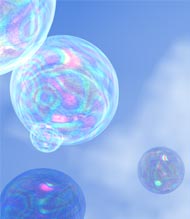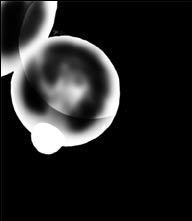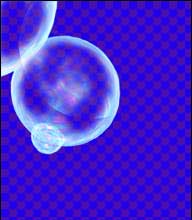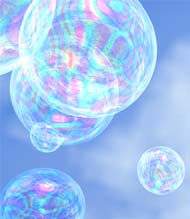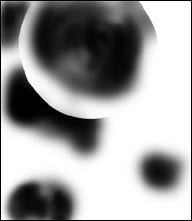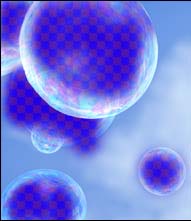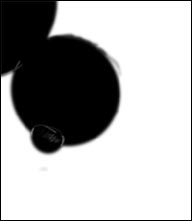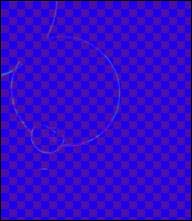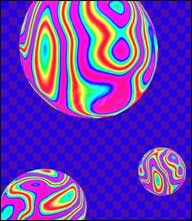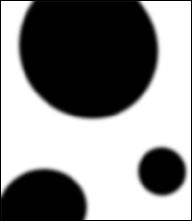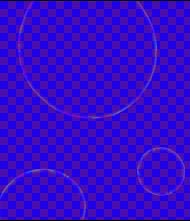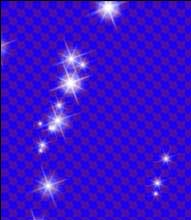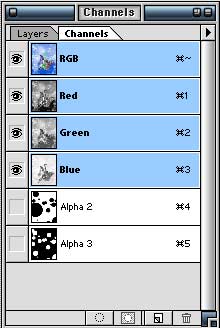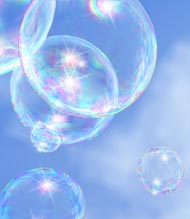 |
| This is a close up crop of the picture, showing you what it should look like when you are finished.
For this tutorial, I assume some working knowledge of both Bryce and Photoshop, or at least a set of manuals handy! In Bryce, I rendered all the Bubbles (which were just simple spheres, so there really isn't any point in showing you that) several times. I made three materials (which are included in the package of Goodies at the end of this tutorial) and rendered the whole scene with each of them. Then I took away the bubbles in front, and rendered again with each of them. Then I rendered again using Render as Mask with all of them, and only those in back. Finally, I rendered without any of them, to get just the sky. I brought them all into Photoshop, and arranged them in layers. Those are what I am going to show you here. |
 |
| First, the layer that is just the sky, since that is the bottom-most layer in Photoshop. |
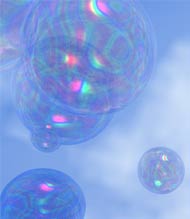 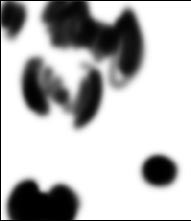 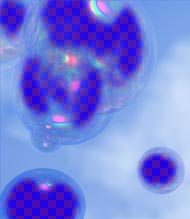 |
|
The second layer has the bubbles using the clearest of the materials I made.
When dealing with transparent objects, the edges are usually less transparent and more reflective than the middle (because you are looking through more of the material.) You can get this kind of effect in Bryce, but only by using refraction. And as soon as you use refraction, you don't have soap bubbles anymore; you have crystal balls. So using refraction was out. But it's not a problem, you can reproduce the effect manually in Photoshop. Just remember the edges are dense and shiny, the center is clearer. I brought in this layer by opening both the picture that will be the finished print picture and the render. Then hold down the command/control key and A to select all. Next, tap V to get the Move tool, and hold down the shift key while dragging the render picture onto the print picture. This places the render picture exactly on top of the print picture. Since they were all rendered the same size, it's a perfect fit. Next, go to the layers palette, and make a mask for the render layer. Once there, mask out the inside of the bubbles by using the Airbrush Tool and drawing on the mask layer with black. (You can tell you are working on the mask layer, because the icon next to the layer shows a gray square with a white circle in the middle of it. If you are working on the paint layer, it shows a paint brush.) When you have cleared the inside of the bubbles enought to suit you, it's time for the next render. The reason to do this with a mask and not with the eraser tool is that you can always make the picture come back by using white paint on the mask layer, even if you have saved, and it's a month later! Try that with the eraser! <g> This shows the render, the mask, and the mask in place on the layer. (I use blue and purple for the checkerboard that shows transparency so that even very light things will show up well on it. If I need dark things to show up, I turn the checkerboard off. You can make it do whatever you want in the Preferences dialog under the Edit menu.) |
